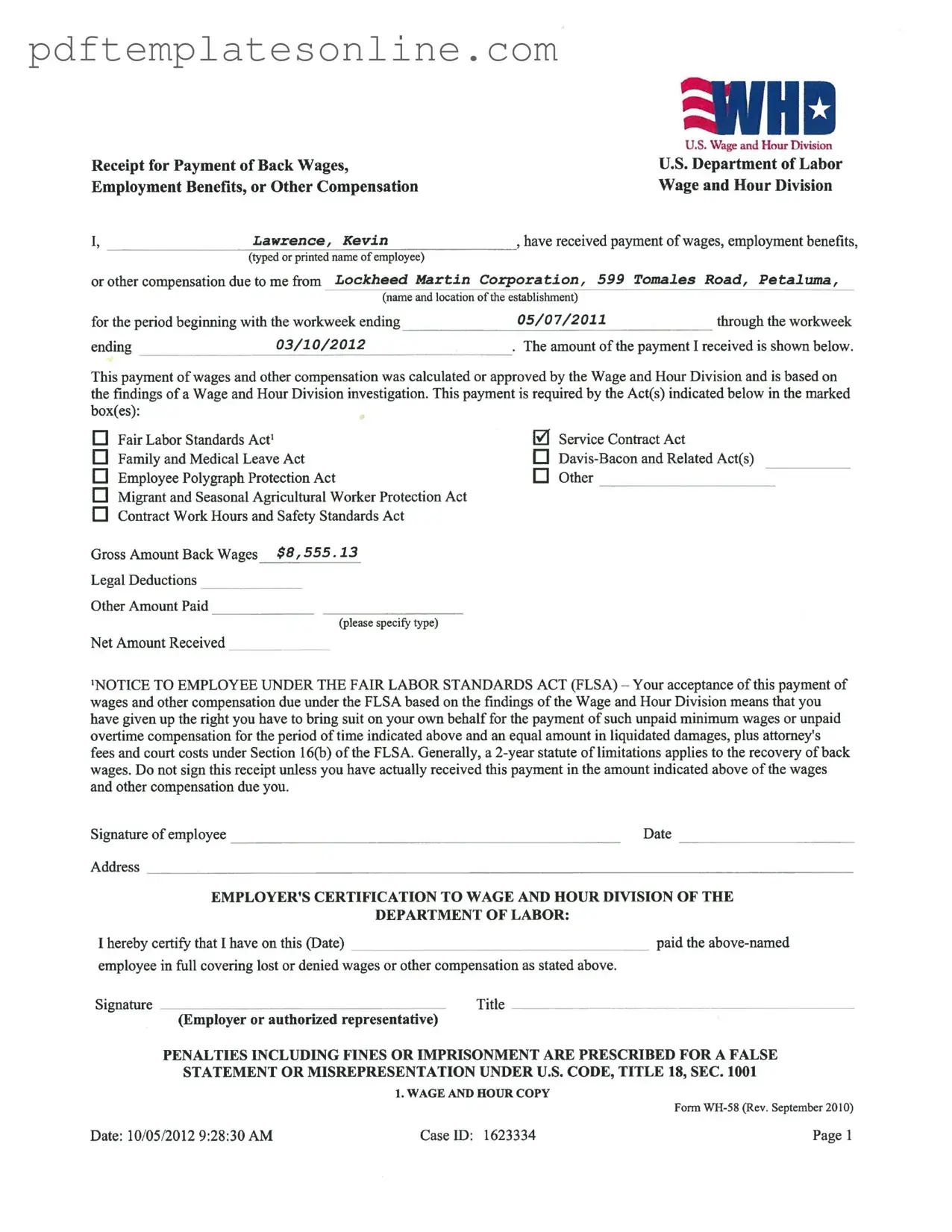Completing the WH-58 form accurately is crucial for employees seeking to claim back wages or other compensation. However, several common mistakes can hinder this process. Understanding these pitfalls can help ensure that the form is filled out correctly and that employees receive the benefits they are entitled to.
One frequent error occurs when individuals fail to provide their full legal name. The form requires the typed or printed name of the employee, and any discrepancies can lead to delays or rejections. It is essential to match the name exactly as it appears on official documents to avoid complications.
Another mistake is neglecting to specify the name and location of the establishment. This section must be completed with precision. Omitting this information can create confusion about the source of the wages, which may result in the claim being dismissed.
Additionally, many individuals overlook the importance of accurately stating the workweek period. The form requests specific dates, and failing to include the correct range can lead to misunderstandings regarding the compensation owed. Employees should double-check these dates against their employment records.
Inaccuracies in the reported payment amounts are also common. Employees must ensure that the gross amount, legal deductions, and net amount received are correctly calculated and clearly stated. Mistakes in these figures can lead to disputes about the actual compensation received.
Moreover, some individuals sign the receipt without having received the payment indicated on the form. This is a critical mistake, as it can waive the right to pursue further claims for unpaid wages. Employees should only sign the document if they have indeed received the specified amount.
Another issue arises when employees fail to read the notice to employees section carefully. This section outlines the implications of accepting the payment, including the waiver of the right to sue for unpaid wages. Understanding these consequences is vital before signing the form.
Lastly, employers also make mistakes when certifying the form. It is essential that they provide accurate information regarding the payment made to the employee. Any false statements can lead to severe penalties, including fines or imprisonment. Employers should ensure that all details are correct before signing and submitting the form.
